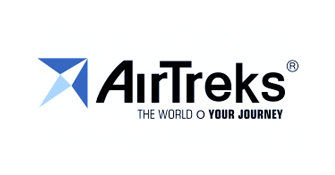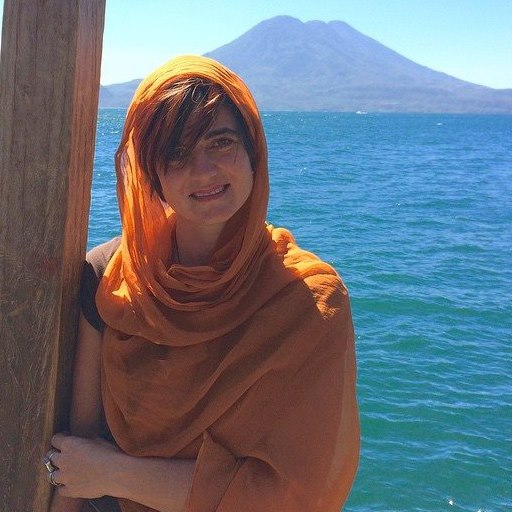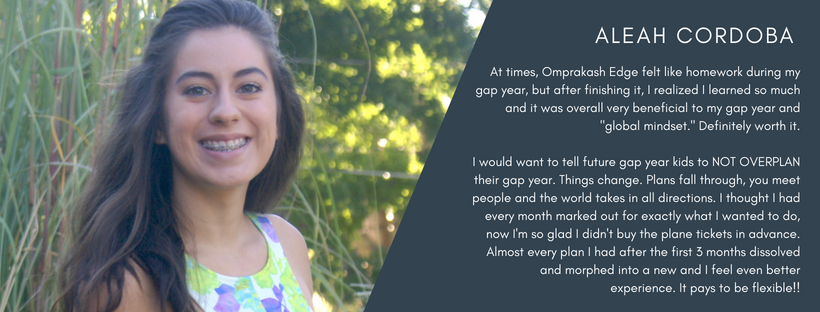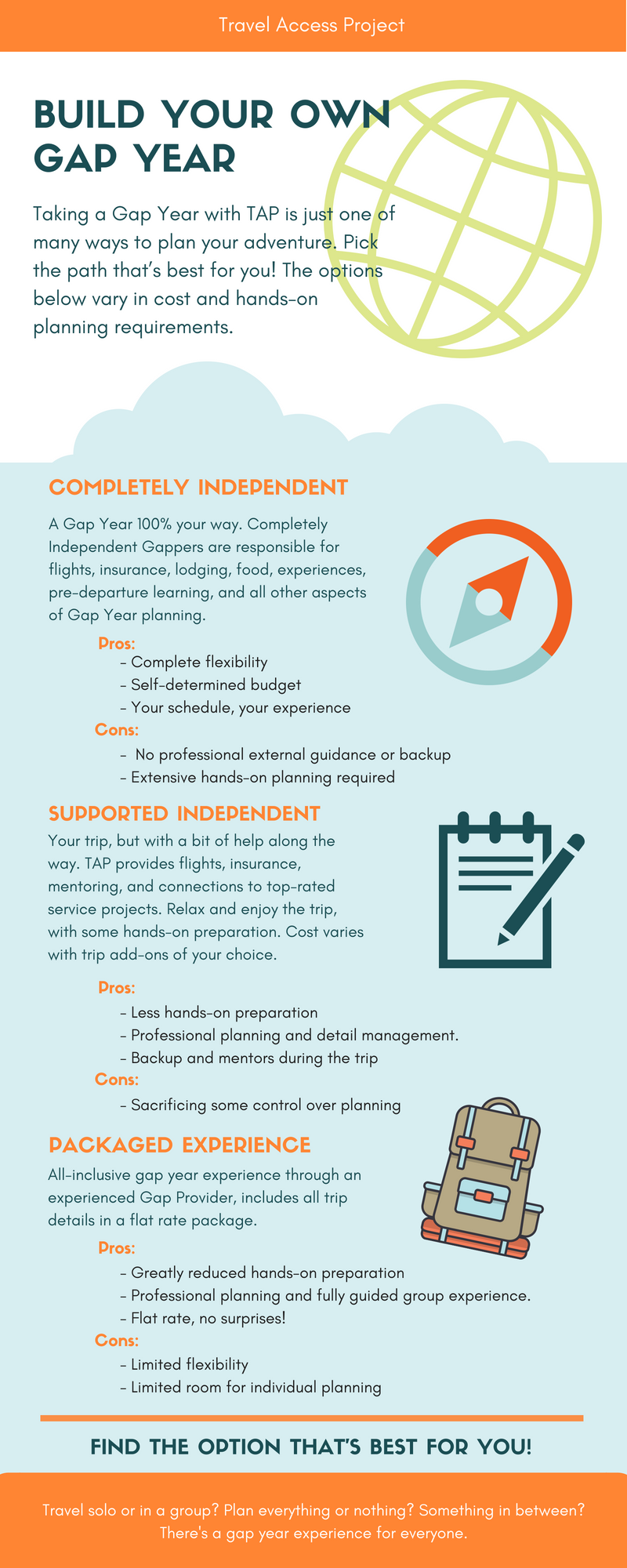Take a Gap Year to
Peru
Imagine yourself standing high above Machu Picchu wondering at the marvelous civilization that built it. The whine of the engine as a narrow wooden boat whisks you along the grey green snake of the Amazon river, butterflies lifting off the red clay bank in a swarm of confetti colors. Seeing your first capybara munching placidly, like an overgrown gerbil. Imagine what it would be like to see the Nazca lines from above, dive the “poor man’s Galapagos,” or arrive on a reed boat to the manmade, floating islands of Lake Titicaca.
Spend a semester, or a whole school year, learning and living your wildest dreams in Peru.
TAP provides everything you need to get started.
Or, make a $500 deposit and start planning now!
Ethical Service Learning – Learn skills too
Through an accredited a network of vetted service-learning opportunities that are ethically sound, we’ll help you find a place to serve and grow from 14 unique opportunities in Peru and use your skills, from photography, teaching, program development, web development or fundraising, agriculture, textile design, dance, or carpentry, to medical support and much more.
We also provide unique pre-departure support and training for each TAP Gapper, including trip planning support, individual mentorship with a TAP Guide, and a deep dive into the experience and ethics of international travel and service learning so that you’re ready to face the world.
Flights
AirTreks is the industry leader in round the world flights, with over thirty years experience getting people where they want to go. Through our partnership with AirTreks, you’ll have a designated travel agent, a real person, who will make sure you get the best flight possible, and the flight costs are included. No matter where you’re coming from.
Food & Lodging
Many of the service learning opportunities we’ll point you towards provide food and lodging for their volunteers. Where they do not, support in finding local lodging is provided and a budget for food and incidentals is outlined. The cost for this will vary and we’ll help you keep it within the budget outlined.
This cost has been factored into the cost of your TAP Gap.
Food and lodging for your arrival and departure in Peru, not at your project, and food or lodging for any excursions you choose to take during your Gap Year are extra, and you’ll need to budget for those.
Travel Insurance
We believe staying safe on your Gap Year should be a primary concern. Travel insurance is an essential part of that. Included in your TAP Gap is full coverage travel insurance that includes emergency care, basic healthcare, transportation of a family member to Peru in case of a serious emergency, and emergency evacuation. Of course the basics of travel insurance, covering your trip and your bags are included too.
Partnered With:

Cultural Opportunities
Our trip to Peru offers dozens of incredible cultural opportunities. For more info about Peru, check our Country Resource. These resources are completely free and at your disposal. Use as much, or as little, as you want. Study casually, or work to create a portfolio of academic work that will blow the socks off of the educational establishment.
Perhaps you’ll want to explore and learn more about:
Peruvian History
From pre-historic Incan times, to the modern day Peru’s history is strewn with adventure stories and magic. One of the only countries left in the world where there are still un-contacted tribes, living much as their pre-Columbian ancestors did, Peru’s present offers a rare glimpse into the past.
Choose one or two aspects or characters of Peruvian history to study in depth:
- Pre-Columbian tribal life (choose one tribe, there were more than the Inca in Peru!)
- The building of the ancient cities, including Machu Picchu
- Mummification in pre-Columbian Peru
- Textiles, pottery & crafts work in pre-Columbian Peru
- The Nazca Lines
- Arrival of the Spanish & European colonization
- Francisco Pizzaro
- Incan Civil War
- Founding of Lima
- Precious metals mining in colonial Peru
- Peruvian civil wars
- Communism vs. Democracy in Peru
- Insurgent groups and guerrilla warfare
- The Shining Path
Conquistadors
Study the arrival of Pizzaro and the conquistadors. What was Spain’s motivation for colonizing Peru? What was Pizarro’s background? What were the first interactions with the native populations like? What were the experiences of the conquistadors? What were the experiences of the Inca and other native groups? Explain the process of Spanish colonization, the introduction of European lifestyle and values as well as the establishment of the colonial regime in Peru. Look for some of the personal narratives to tell that lie below the surface.
Amazon Rainforest
The Amazon rainforest makes up over 60% of the land area of Peru and only Brazil is home to a larger portion of the forest than Peru. It is estimated that five percent of the population of Peru lives in the Amazon. The biodiversity of this region is incredible. Scientists believe that over 60% of all mammal species and over 40% of all of the bird species in the world live here. That’s pretty amazing.
If you’re going to Peru, spend some time in the rainforest. Do your best to get “off the grid” and spend some time with an ecologist and guide in the Amazon.
Before you go, study the region. What are the things that make this region so remarkable? Why is the Amazon so important to the planet and to humanity? Historically, who populated this region? Who populates it now? What is the political situation in Peru surrounding the land in the Amazon? Examine the bio-diversity, learn about some of the amazing creatures and plants that live here. Tell some of the human stories that have been documented, regarding uncontacted tribes, indigenous narrative, and the conflict between worlds.
While you are in the Amazon make it a point to listen, learn, and document.
Peruvian Mysticism
There are a number of mystical traditions in Peru. Some authentic, some marketed, largely to tourists. Mysticism in Peru is a growing economic opportunity as well as a deeply rooted tradition. So some research up front on the indigenous mystical traditions in Peru. Seek to peel back the layers and get to the deeper, more original understanding. Examine oral tradition and how this form of history keeping remains significant in many of the Peruvian people groups. Look for similarities between Peruvian mysticisms an others you’ve encountered or learned about from around the world. Compare and contrast these.
Or, peel back a layer on the shaman industry and expose some of the charlatans in the “business.” What motivates these people to manipulate ancient tradition in a disingenuous way? Or do you think they get a bad rap? Choose a path and tell, either some success stories, or some horror stories surrounding mystical tourism.
Agriculture
Agriculture is a major industry in Peru. The potato finds its roots in Peru and there are over 3000 varieties of potato grown within the country. Also, cotton, sugar cane, coffee, quinoa, logging, wool production, corn of many varieties, coca, and asparagus are important crops.
Choose an agricultural sector and learn more about the nuances of production, worldwide consumption and Peru’s role in the market. Examine production methods, ecological impact, the human factor (working conditions, wages and community life), and the historical significance of this crop. Try to visit a farm or production center and talk to farmers and agricultural workers first hand. Making meaningful connections with our food sources and the supply chain is one way to take responsibility for our consumption habits on a global scale.
Nazca Lines
The Nazca Lines are one of many of the great mysteries in Peru. The official name for these lines is geoglyphs, which basically means rock pictures. Except that they weren’t built by building up rocks to create the designs, they were built by removing rocks to expose the lighter colored rocks and earth below. Because of the climate in the area, they’ve been well preserved. You can see some of them from high points in the region, but the best view is from the air.
Read, or watch some documentaries, about the Nazca lines. Who were the Nazca? What is the prevailing theory about the lines and the people who build them? What do archaeologists believe the lines were for, or about? Also learn a bit about some of the alternative theories of these lines. Which makes more sense to you? Why?
Lake Titicaca
Lake Titicaca is the largest lake in South America and one of the highest altitude in the world. It’s located on the border of Peru and Bolivia and is interesting for several reasons. The architecture, culture and history of the region are unique. Visit and study some of the following:
What makes Lake Titicaca special? How are the reed islands constructed and maintained? Why to the people still live on them? How are the reed boats constructed and maintained? Where did this unique form of construction originate? Is there anywhere else in the world where this style of reed construction exists? What were Thor Heirdahl’s theories on this lake, the people, and how did they inform his expeditions and the subsequent theories on how the South American continent may have come to have been populated?
Or, make a $500 deposit and start planning now!
Get Ahead With a Gap Year
Did you know that Gap Year students return to university at a rate of 91% and do measurably better than their peers who don’t take a Gap Year? Did you know that Gap Year alumni report higher job satisfaction, higher levels of civic engagement, and that for most students their gap year has a direct impact on their career choice? Did you know that students who have taken a Gap Year actually get through college faster, on average, than their non-gap peers? They do.
We believe taking a well planned Gap Year is an essential part of a well rounded education and the evidence that it benefits students, not only as they embark on higher education but in all areas of life, is abundantly clear.
Read more about the research in the National Alumni Survey done by the Gap Year Association.
Pre-Departure Preparation
Perhaps this Gap Year is the first time you’ll travel alone. The first time you’ll live in another country. The first time you’ll be responsible for your own food and lodging, budget and life planning. You want to make a difference in the world, but you want to do it well. Perhaps your family and friends are concerned that you’re not ready, or that there is too much to be afraid of.
TAP students receive a free student membership to GYA. Our pre-departure support is designed to get you ready. From help with your planning, to individualized mentorship with a TAP Guide, we’ll be with you every step of the way.
We’ve helped over 100,000 people take round the world trips over the past 25 years. We’ll help you too. We’ve taken our own Gap Years, and so have our children. We understand what it feels like, and we have overcome the same fears.
Who This is For:
So, who should take a TAP Gap Year? We think everyone can benefit from a Gap Year, regardless of where you are at in life. Most people who take a Gap Year do so between high school and college, or after university graduation and before their career starts. But that’s not the only good time. Lots of people take a mid-career Gap Year or a family Gap Year later in life. TAP Gap Years are for everyone.
You should consider taking a TAP Gap Year if:
- You recognize that travel is an essential part of education
- You have a spirit of adventure
- You have a desire to serve and give back in the world
- You are an independent sort of traveler
- You are confident in your ability to “go it on your own”
- You are serious about learning on your Gap Year
- You are budget conscious and want to get the most bang for your buck
- You’d like a little bit of help with the planning
- You’re looking for the security of a travel company with years of experience
- You recognize the value of a mentor in learning and travel
- You’re willing to take responsibility for your own journey
In short, TAP Gap Years are for intrepid and adventurous travelers who could benefit from the experience and support of an experienced team.
Get Started:
Apply to TAP Gap now
- Get connected with your TAP Guide
- Apply for your service learning project
- Plan your flights with your AirTreks travel agent
- Complete your pre-departure study and planning
- Go!
Ready for the adventure of a lifetime?
Who This is NOT For:
There are lots of ways to take a Gap Year and we don’t think ours is the best way for everyone.
It’s certainly not the only way.
Some people aren’t ready to travel on their own.
Some people need the safety net of a well planned group trip and some extra support to build the skills they need to travel safely and well on their own.
Not everyone WANTS to take on the burden of doing the planning for themselves. Some people will find a group experience more satisfying than a solo venture. There are a lot of reasons you should NOT choose a TAP Gap Year.
A TAP Gap Year probably isn’t for you if:
- You really enjoy group travel more than being on your own
- You’ve never spent a night away from home
- You want a guide on your trip with you
- You aren’t interested in budget travel
- You don’t want to work or serve at all on your Gap Year
- You aren’t interested in learning before and during your Gap Year
- You are looking for resort style living
- You want to do all of the planning, every single bit, yourself
- You want to get college credit on your Gap Year
- You question if you are mature enough to take responsibility for yourself
In short, you should not take a TAP Gap Year if you are looking for a group experience or are not comfortable with the idea of traveling independently.
If you want to have a great group experience on your Gap Year and are looking for a reputable program to join, we highly recommend that you start looking at the Gap Year Association. They have a list of reputable and accredited Gap Year programs around the world, some of which even offer college credit.
Who Are We?
Hi, we’re Sean and Jenn… or Jenn and Sean… we are co-founders of the Travel Access Project, avid travelers, active learners, enthusiastic educators, once upon a time student travelers, and parents.

Sean Keener:
Sean is the Chairman of BootsnAll and AirTreks, two of the most trusted brands in the independent travel marketplace.
BootsnAll is one of the longest standing independent travel sites and through that portal Sean has been helping people take long term trips for over twenty years. Well over 1,000,000 people have taken journeys of a lifetime through the BootsnAll network.
AirTreks is the largest purveyor of round the world airline tickets. They specialize in helping people take complicated trips. Their experienced travel agents will help you get the best deals on flights and the perfect itineraries nailed down for your Gap Year. They know their stuff.
Sean attended the GAP Year Conference in 2017 and was happy to see the quality of all the GAP years provided their, but disappointed at the high price and in accessibility of them.
Sean hopes that $5000 for a Semester and $10,000 for a year all inclusive will allow more folks to experience the life transforming effects and learnings of a GAP year experience.

Jennifer Miller:
Jenn was inspired to create the Travel Access Project with Sean as a result of her life traveling. She was almost born in Guatemala, spent her childhood across the three major countries of North America, took her first solo trip to Europe at 16 and spent a full decade traveling full time with her four children for the purpose of their educations. She believes travel is essential to a well rounded education and she wants to make that happen for every person, not just her own kids.
Jenn has lead learning journeys for groups of girls and women, building the skill set necessary for safe solo travel as women. She has spent years mentoring young adults who want blend travel and education and has launched three of her own children to significant solo and Gap Year travel. She knows what it feels like to be the parent, launching a kidult into big time travel, alone. Having spent more than a decade working with families at the intersection of education and adventure, she’s uniquely qualified to help young people meet the world, and parents successfully hand off the reins.

TAP Guides
All of our TAP Guides are experienced travelers who have taken Gap Year type trips and worked in the industry for many years. Many of them are also educators, and parents. These are people who are handpicked for their wisdom, and real-world experience; not only in travel, but in working with young people in travel.
Through the EdGE classroom you’ll communicate with your mentor about your trip plans, as well as what you are learning. We will be there every step of the way to make sure that you’ve dotted all the i’s and crossed all the t’s, so that you are well prepared to face the adventure ahead of you.
With the TAP Guides, you can rest assured that you are in good hands.
Testimonials



Which path to a Gap Year will you take?

